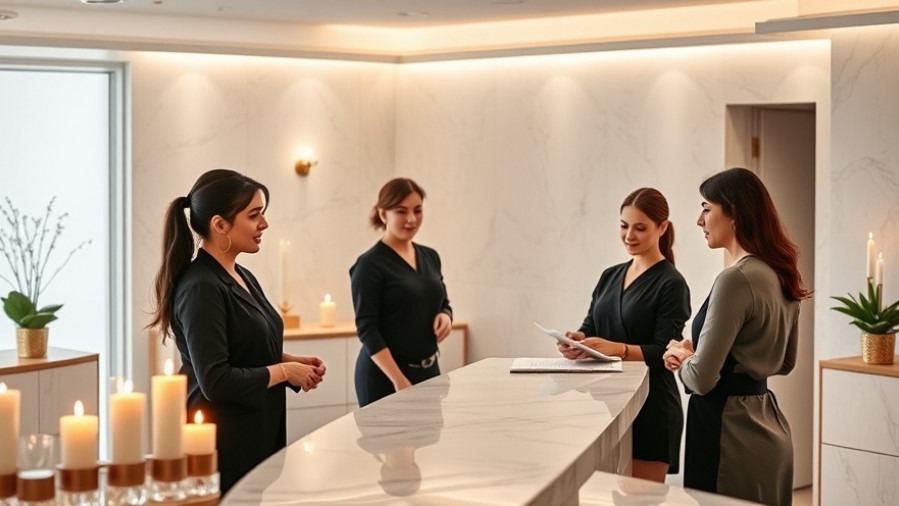
When Frustration Sparks Innovation
Every spa owner has faced it — that sinking feeling when technology gets in the way. The booking platform won’t sync. The marketing dashboard freezes. A simple task somehow eats half your morning. Most of us curse, adjust, and keep going.
Melanie Perkins didn’t.
As a university design tutor in Perth, Australia, she spent hours watching students struggle with graphic-design software that was supposed to make creativity easy.
“It would take an entire semester just to learn the basics,” she told Inc. years later. That frustration stirred something: Why does design have to be so hard?
Her answer became Canva, a drag-and-drop design platform now valued around $42 billion and used by more than 230 million people each month.
But that success was far from instant. Perkins and her partner Cliff Obrecht faced over one hundred investor rejections before a single yes.
Still, she kept refining. Kept simplifying. Kept believing that beautiful design should be within reach for everyone — not just the tech-savvy few.
For those who run spas, her story feels familiar. Every day brings small inefficiencies — a check-in bottleneck here, a confusing promo there — and the quiet desire to make things flow better.
Perkins’ journey shows that innovation begins with empathy for whoever’s struggling most, whether that’s a design student or a stressed-out guest at the front desk.
“Innovation starts with empathy for the person who’s struggling.” — Melanie Perkins
The Beginning: A Student Project That Grew Wings
Before Canva became a global household name, it was Fusion Books — a modest yearbook-design platform built from her mother’s living room. Schools loved it. Teachers could suddenly design professional-looking yearbooks without needing advanced skills.
That early win gave Perkins proof that people weren’t craving complexity. They were craving ease.
When she and Obrecht started pitching their larger vision to investors, most saw only a niche product. Too simple, they said. Too small.
But rejection only sharpened her message. Each failed pitch forced her to communicate the idea more clearly: to empower the world to design.
There’s a lesson here for wellness business owners — sometimes the best clarity comes from the no’s. Each setback is feedback, refining both your voice and your value.

Pivotal Moments That Changed Everything
Everything shifted when Perkins met Cameron Adams, a former Google designer who could translate her vision into working code. Together, the trio launched Canva in 2013.
The timing couldn’t have been better. Social media was exploding, marketing was becoming visual, and small businesses desperately needed fast, affordable design. Canva delivered — drag, drop, done.
By 2015, millions had signed up. A decade later, almost every Fortune 500 company uses it in some form. The company continues to evolve: its 2023 rollout of Magic Studio added AI features like Magic Write and Magic Design, while the 2024 purchase of Affinity’s professional suite signaled a deeper move into pro-level creativity.
Analysts estimate Canva’s annual revenue at roughly $3 billion, with global users spanning 190 countries. Not bad for a once-dismissed idea hatched in a dorm room.
And yet, Perkins insists the mission hasn’t changed. “Simplicity is the ultimate sophistication,” she says — a statement spa owners can easily relate to.
A calm, intuitive experience always outperforms something complicated and impressive-looking but stressful to use.
The Quiet Power of Simplicity
In the design world, simplicity often hides genius. Perkins realized that the easier it felt to create, the more confident people became.
It’s no different in the spa world. Guests crave the feeling of effortlessness — from the moment they book to the way they float out the door afterward. Every clunky form, confusing checkout, or overstuffed treatment menu chips away at that calm.
When a spa runs smoothly, guests don’t notice the systems at all. They just sense the harmony. The same way a Canva user senses possibility when they first see a blank template.
Simplifying isn’t about removing personality; it’s about removing friction so that personality can shine through. That’s the subtle art of both good design and good hospitality.

A Culture with Heart
Beneath Canva’s colorful interface lies a surprisingly soulful culture. Perkins and Obrecht call it their Two-Step Plan:
Build one of the world’s most valuable companies.
Use it to do the most good possible.
They’ve pledged 30 percent of Canva’s equity to charitable causes — an extraordinary commitment, even among tech founders — and joined the Pledge 1% movement to give time, resources, and product access to nonprofits and educators worldwide.
For spa owners, that idea of purpose beyond profit resonates. The wellness industry is built on service, but true leadership extends that care to staff, community, and planet.
Whether it’s sustainable sourcing or local wellness outreach, generosity becomes part of your brand DNA.
“We’ve always believed in creating a company that does the most good it can,” says Obrecht.
That philosophy isn’t just admirable; it’s strategic. Clients sense integrity the same way guests sense calm — they may not articulate it, but they feel it.
Lessons Worth Bringing into the Treatment Room
Here’s how Perkins’ philosophy translates to spa leadership in the real world:
Spot the pain points. The things that frustrate you daily might be the start of your next innovation.
Make simplicity your luxury. Minimal friction equals maximum elegance.
Nail the first impression. Canva’s onboarding made users feel instant success; your first-time guest experience can do the same.
Adopt technology with purpose. Use digital tools to enhance, not replace, human warmth.
Lead with clarity and care. When your “why” is clear, every decision becomes easier to make — and easier for others to believe in.
Never stop refining. Perkins still updates Canva constantly. Your spa can evolve in the same rhythm, one gentle upgrade at a time.
These may sound simple, but that’s the point. Simplicity is sustainable. It’s scalable. And it feels good.

Empathy as Strategy
Ask anyone who’s worked with Melanie Perkins, and they’ll tell you her most striking quality isn’t technical genius — it’s empathy. She built Canva by feeling her users’ frustrations so deeply that solving them became second nature.
That’s something spa leaders inherently understand. The work of wellness is emotional design: shaping spaces, sounds, and sensations that help people exhale.
Empathy isn’t a soft skill — it’s a growth strategy. It’s what keeps clients returning and teams aligned. When people feel seen, they stay.
Conclusion: Turning Frustration into Flow
Melanie Perkins’ story proves that big ideas often start with small annoyances. She didn’t stumble onto success; she worked her way there by caring enough to simplify what others ignored.
For spa leaders, her journey is a gentle reminder that innovation doesn’t have to mean reinvention. It can mean refinement — shaving off one layer of friction at a time until everything feels beautifully seamless.
So when a process breaks down or a system feels clunky, take a breath before reacting. Look closer. That irritation might be a teacher in disguise.
“When you focus on solving real problems for real people,” Perkins says, “you end up changing lives — sometimes including your own.”
Simplicity. Empathy. Purpose. Those were the ingredients that turned a frustrated college tutor into a global CEO. They’re the same ingredients that can transform your spa — not into a billion-dollar company, but into something far rarer: a business that feels as good to run as it does to visit.
---
Authored by the Spa Front News Editorial Team, bringing readers in-depth insights and emerging trends from across the global spa and wellness industry.
 Add Row
Add Row  Add
Add 




Write A Comment